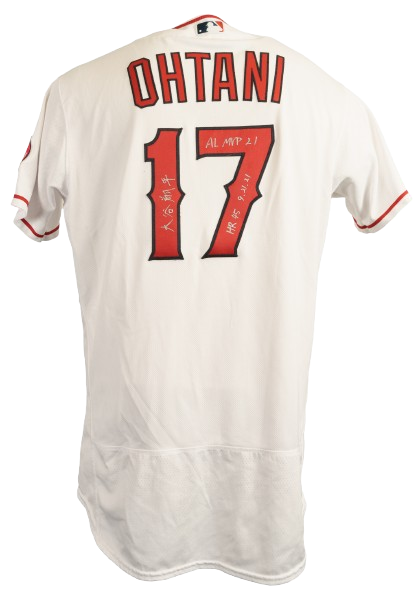Odd Collectibles
Tip Top Weekly: A sports publication from over a century ago can still be a fun read
When some veteran sports collectors hear “Tip Top,” they commonly think of a bread brand featuring images of baseball players slipped into the packaging: bread labels in 1952, cards in 1947. More advanced hobbyists might go back even further with the 1910 Tip Top Bread issue highlighting the 1909 World Champion Pittsburgh Pirates.
Yet around the time Honus Wagner and the Pirates won their first World Series in “aught-nine,” against Ty Cobb and the Detroit Tigers no less, thousands of loyal readers had already championed the sports publication Tip Top Weekly for several years.
Produced by Street & Smith, a name associated with preseason sports preview magazines for decades (even though the S & S Company sold to Conde Nast Publications in 1959), Tip Top Weekly first landed at newsstands and other small retail outlets in April 1896.
Self-labeled as “An Ideal Publication for The American Youth,” TTW brought young readers fictional stories, many spotlighting the athletic exploits of Frank Merriwell. A bit of a do-gooder, Merriwell attended a make-believe academy (Fardale) in New England and later Yale, where he frequently keyed sports victories, many against Harvard.
Since the predominantly sports angles likely wore thin over several years, Merriwell grew more into a globetrotting adventurer, solved the occasional mystery and righted as many wrongs as he could wherever he roamed. Frank’s half-brother Dick, who was much less the role model compared to his partial-sibling, also stars in numerous similar tales.
Merriwell’s creator, William George “Gilbert” Patten, who frequently used the pen name Burt L. Standish, steadily cranked out hundreds of stories for the pulp publication starting in 1896 and continued with S & S in that capacity for over a decade. Many “Standish” pieces ran some 20,000 words. So, when he wrote four stories a month, which Patten/Standish normally did, he was essentially writing enough copy for an average-sized novel.
Standish eventually transitioned his Merriwell universe, with great success, to dime novels. In one form or another the Frank Merriwell character later also enjoyed stints in comic strips, comic books, radio serials and a 1936 film serial produced by Universal Studios. Searching YouTube for “Frank Merriwell” generates portions and sometimes full episodes of the radio show and the film serial. In 1965-67, author Mike Frederic wrote three sports-related books based on Merriwell.
Although the stories within TTW likely have limited appeal to many current collectors, the cover art attracts some eyes. Several of the magazine’s brightly colored and, at times, crudely illustrated covers deliver scenes of baseball, football, basketball and other activities, showing a “preview” of the lengthy story highlighted within. The covers display well when framed. Sometimes the back covers, with sports-themed artwork accompanying the text, also carry solid eye-appeal.
One of the more head-scratching covers comes with an Aug. 27, 1904 date, No. 437 in the series, and this Standish story received the name: “Dick Merriwell’s Self Reliance Or, Snared By His Own Scheming” (these pulps normally had two story titles). Looking at the rather simple illustration, captioned “After a high fly to center field,” it appears that maybe Mr. Merriwell’s scheme was at least partially “snared” by trying to snag a fly ball with his bare hand. Just sayin’.
Put Your Hands Together
Another of the entertaining elements of this long-ago magazine are the letters from readers in the “Applause” section. An excerpt from one such Dec. 1, 1900 note arrived from Frank Rosenberg of East Canaan, Conn., a typical enough TTW letter: “The ball games and athletic sports were described in the past series in such a way that the reader would certainly think he had paid a half-dollar for a reserved seat, when he or she had only paid a half-dime. I have heard of a fellow falling asleep one evening reading a novel, but one thing I am certain of, and that is, he wasn’t reading Tip Top.”
Apparently numerous readers had similar thoughts over time and TTW grew to experience tremendous circulation for many years; some estimate it over 100,000 at its peak.
The publication’s traction, however, attracted copycats. In fact, at the top of the Dec. 23, 1905 cover the magazine issued this message: “CAUTION! All readers of the renowned Tip Top stories should be aware of base imitations, placed upon the market under catch names similar to Frank Merriwell, and intended to deceive.”
Call it pure coincidence, but that issue’s cover refers to “Frank Merriwell’s Tigers Or Wiping Out The Railroad Wolves”; maybe some of the “wolves” the writer/magazine had in mind at the time revolved around squashing competitors gnawing away at their business. A couple of publications that fit this copycat description for the period: Frank Manley’s Weekly and The Young Athlete’s Weekly, both starring Frank Manley.
Yet, with all its fans, Tip Top’s popularity eventually teetered and in the summer of 1915 it downshifted to Tip Top Semi-Monthly. A few months later it ratcheted down again, this time into Wide Awake Magazine, with only a six-month run under that name.
Some of the factors that led to Tip Top bottoming out: Standish not writing for them near the end of its existence, competing publications, shifting tastes/more choices for America’s youth, which included the skyrocketing success of silent movies, often costing a nickel, such as the comedy antics of The Keystone Cops and the wildly popular Charlie Chaplin.
Another 1900 “Applause” excerpt helps conclude this TTW overview. A Cleveland, Ohio, reader, who wrote in using only their initials, T.T.D.C., shared, in part: “We extend our thanks to Mr. Standish, Street & Smith, and all who are concerned in the bringing forth of the Tip Top Weekly, and we also thank them for the many pleasant hours which have been spent perusing the Tip Top Weekly.”
Politeness and praise reminiscent of one Frank Merriwell.
Variety of Availability
Due to age and the lower-grade paper used for these “pulps,” surviving copies of Tip Top commonly exhibit at least mid-level wear. Several different issues turned up in a recent eBay search, so a decent selection is normally available on that site.
Understandably, prices vary for different reasons, but an average Tip Top with a sports cover sells for $10-$20. A few have sold over the summer for $30-$45, but they had the sports theme, artwork and condition to justify those prices. EBay also shows a couple sellers hawking a DVD ($12-$16) containing hundreds of issues of TTW.
To get a taste of Tip Top without even dropping a nickel, visit the Cleveland Public Library website (CPL.org). On its homepage, in the upper right-hand corner, first click on the “Search CPL” button, then in that search box type in “Tip Top Weekly” and just below that entry click on the Digital Gallery “source” and press the “Submit Search” button. This generates a list of a handful of “Weekly” issues, scanned page-by-page, from 1900-1911.
For a glimpse of seven basketball-themed covers of Tip Top, check out Vintagebasketball.com. The hoops site also offers up a few other similar looking “pulps” of the era.
Doug Koztoski is a frequent SCD contributor. He can be reached at dkoz3000@gmail.com.








